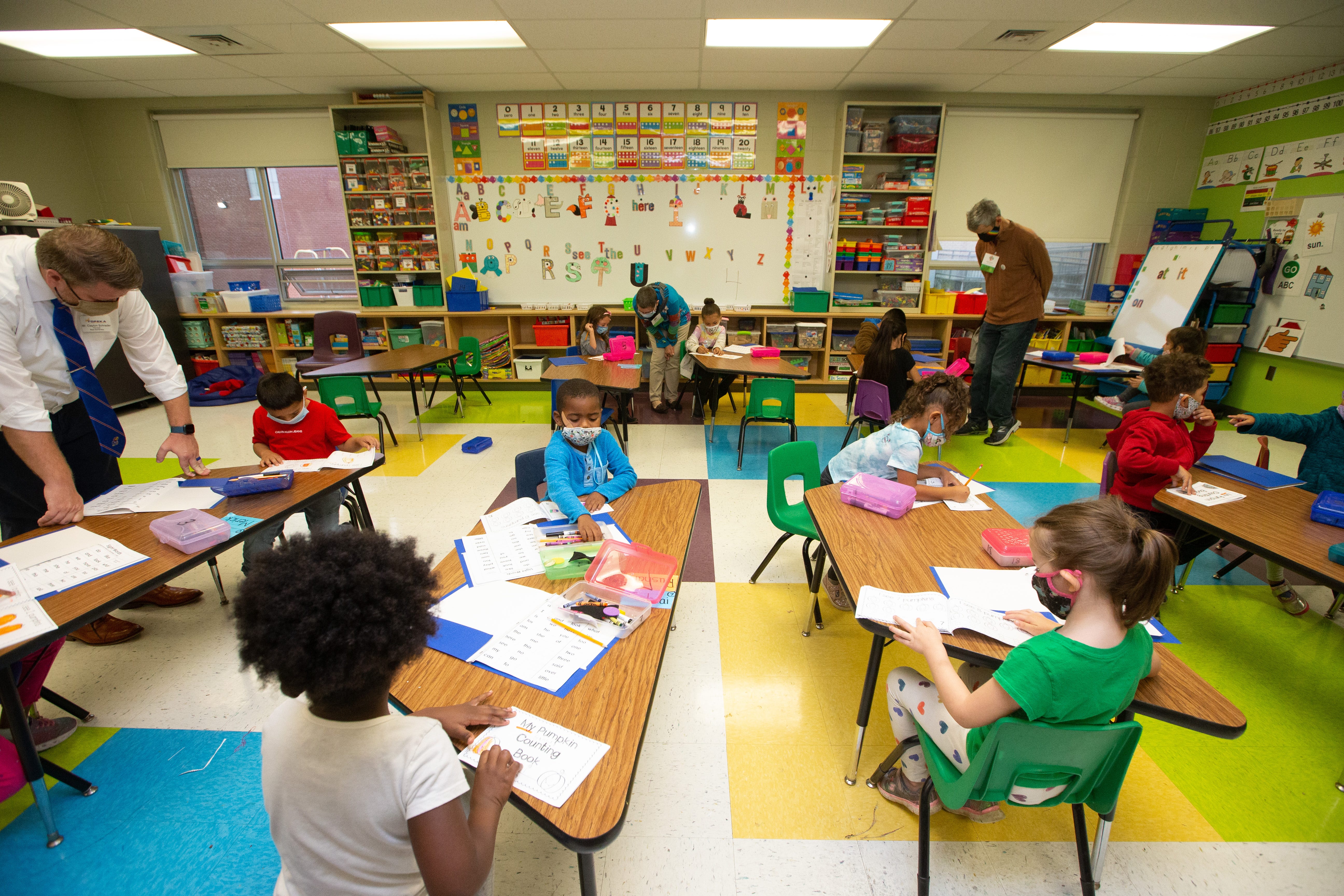Accelerate Learning with Primary Science Tuition Singapore for Young Minds
Accelerate Learning with Primary Science Tuition Singapore for Young Minds
Blog Article
A Comprehensive Overview to the Various Learning Approaches in Key Science Instruction
The exploration of varied discovering methods in key science instruction presents a possibility for teachers to improve pupil engagement and understanding dramatically. By taking a look at hands-on learning methods, inquiry-based methods, and collaborative techniques, we can identify reliable methods that cater to different learning designs. Additionally, the assimilation of innovation and differentiated instruction plays a crucial duty in fostering a comprehensive environment. Nevertheless, the inquiry continues to be: how can these techniques be properly applied in the classroom to optimize their impact? The response depends on a more detailed evaluation of each method and its effects for training scientific research.

Hands-On Understanding Methods
Hands-on learning techniques play a critical function in key scientific research direction, involving trainees in energetic exploration and experimentation. These methods allow learners to connect directly with sensations and products, cultivating a much deeper understanding of clinical ideas. By utilizing manipulatives, designs, and real-life experiments, educators produce an atmosphere where pupils can observe, hypothesize, and evaluate their ideas.
Such techniques not just enhance understanding yet additionally cultivate important reasoning and analytical skills. When pupils take part in tasks like constructing easy equipments, planting seeds, or conducting chemical reactions, they are urged to ask concerns and look for solutions through their own observations. This experiential strategy helps to debunk complicated scientific principles, making them much more accessible and relatable.
Furthermore, hands-on discovering promotes cooperation amongst peers, as students usually operate in teams to carry out experiments or share searchings for. This teamwork not only enhances their understanding experience however likewise creates important social abilities. Eventually, incorporating hands-on methods in key science direction promotes a long-lasting love of knowing and curiosity concerning the environment, laying a solid structure for future academic searches in scientific research and beyond.
Inquiry-Based Learning
Inquiry-based learning is an educational method that urges pupils to ask inquiries, check out phenomena, and create their own understanding of scientific ideas. This technique changes the focus from typical teacher-led direction to an extra student-centered experience, where learners take the campaign in their academic trip. By fostering curiosity, inquiry-based knowing promotes much deeper involvement with the product, permitting pupils to discover topics in a significant context.
In practice, this approach commonly includes hands-on experiments, observations, and critical thinking activities that straighten carefully with the scientific method. Students are urged to formulate hypotheses, layout investigations, and evaluate information, which grows essential skills such as analytic and logical reasoning. The role of the educator in this structure is to assist in exploration, guiding pupils with the query procedure while urging independent thought and collaboration.
In addition, inquiry-based learning nurtures a sense of possession over the discovering procedure, encouraging students to go after understanding actively. This technique not only enhances understanding of clinical concepts but likewise promotes a lifelong love for understanding, furnishing students with the abilities essential to browse an increasingly complicated globe.
Collaborative Knowing Approaches
Collective discovering strategies equip students to engage in purposeful interactions with peers, cultivating a shared responsibility for their instructional results. In primary science direction, these approaches urge learners to collaborate to check out clinical ideas, address issues, this post and conduct experiments (primary science tuition Singapore). By taking part in group activities, students can utilize varied viewpoints, enabling richer understanding and retention of clinical expertise
One trick aspect of collective learning is the focus on communication abilities. Students must express their thoughts, listen proactively to others, and discuss ideas, all of which are critical proficiencies in both real-world and scholastic contexts. This social interaction not only enhances their understanding of scientific principles but likewise promotes synergy and conflict resolution abilities.
Furthermore, collaborative discovering typically causes boosted motivation and involvement. They are more most likely to take possession of their discovering journey when students see the worth of their contributions within a team. Teachers can facilitate this process deliberately organized team tasks that straighten with curriculum goals while providing advice on reliable partnership strategies. Generally, including joint knowing strategies in primary scientific research direction grows a dynamic learning environment that prepares students for future academic and social difficulties.
Innovation Assimilation in Scientific Research
The integration of modern technology in key science direction enhances finding out experiences by offering cutting-edge devices and sources that support various training techniques, including collaborative knowing - primary science tuition Singapore. Using electronic platforms, simulations, and interactive applications enables students to engage deeply with clinical ideas, assisting in an extra hands-on method to learning
Online labs, for example, allow learners to conduct experiments safely and efficiently, promoting inquiry-based discovering. These devices can mimic real-world clinical circumstances, enabling pupils to imagine complicated procedures that would be hard to reproduce in a conventional classroom setup. Innovation fosters interaction and cooperation among trainees, as they can share searchings for and work with each other on jobs with online platforms.
Furthermore, multimedia discussions and academic video clips can improve lessons by providing to diverse knowing designs, making abstract ideas more accessible. Data evaluation tools also equip pupils to collect and analyze clinical information, reinforcing crucial assuming skills. On the whole, the tactical unification of innovation in key look at this website science direction not just improves interaction however likewise prepares pupils for a highly advanced culture, outfitting them with crucial abilities for future scientific endeavors.
Set Apart Direction Methods
Separated guideline approaches are important for attending to the diverse needs of students in key science education and learning. These approaches make it possible for instructors to customize their training techniques to accommodate varying capacities, interests, and finding out styles within the classroom. By employing differentiated instruction, instructors can produce a comprehensive atmosphere that cultivates interaction and boosts understanding of clinical principles.
One effective technique is to use adaptable grouping, which enables students to team up with peers at similar ability degrees or with differing point of views. This approach motivates peer learning and promotes crucial thinking. In addition, supplying choices in projects can empower trainees, permitting them to pick projects that resonate with their interests while still satisfying curricular objectives.
In addition, incorporating tiered tasks is an additional beneficial technique. Deliberately tasks with differing levels of intricacy, educators can ensure that all students are properly tested, no matter their effectiveness. Using developmental evaluations to gauge comprehending further makes it possible for instructors to adjust their instructional approaches dynamically, ensuring that each learner obtains the support they need.
Inevitably, implementing set apart direction strategies in key science education not just improves trainee understanding outcomes however likewise grows a passion for scientific research, preparing students for future academic pursuits.

Verdict
In summary, reliable primary science instruction requires a complex approach that includes hands-on learning, inquiry-based methods, and joint techniques. The assimilation of innovation and separated direction additionally caters to varied discovering designs, cultivating a setting helpful to expedition and essential thinking.
The expedition of diverse discovering methods in key scientific research guideline offers an opportunity for instructors to enhance trainee interaction and understanding considerably.Hands-on learning techniques play an essential function in primary scientific research instruction, involving pupils in active expedition and trial and error.Inquiry-based discovering is a training approach that encourages students to ask questions, examine phenomena, and build their own understanding of scientific principles.Collective learning approaches empower students to involve internet in significant communications with peers, cultivating a shared duty for their instructional results. In general, incorporating collaborative knowing techniques in primary scientific research instruction cultivates a dynamic discovering setting that prepares pupils for future academic and social obstacles.
Report this page